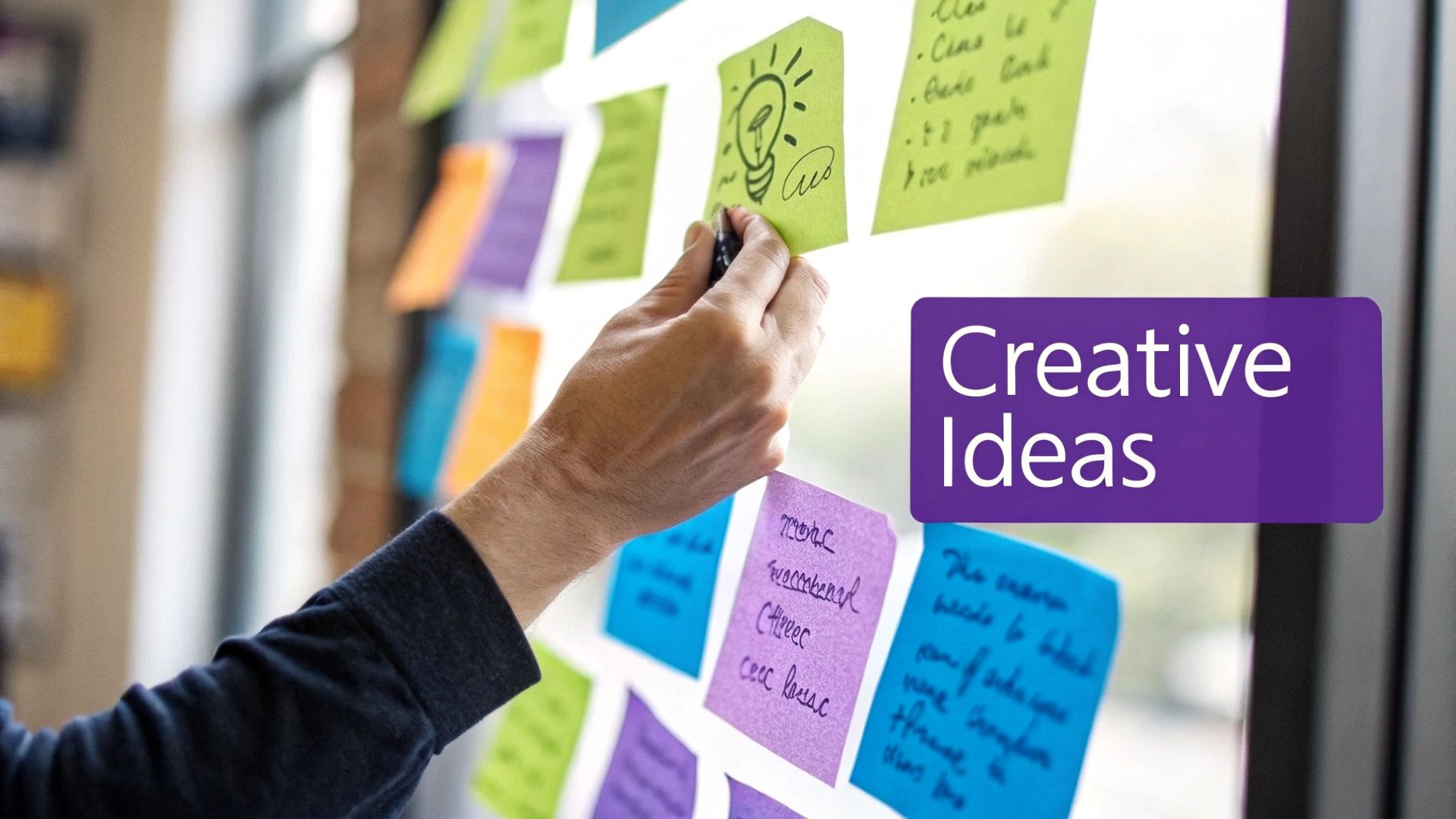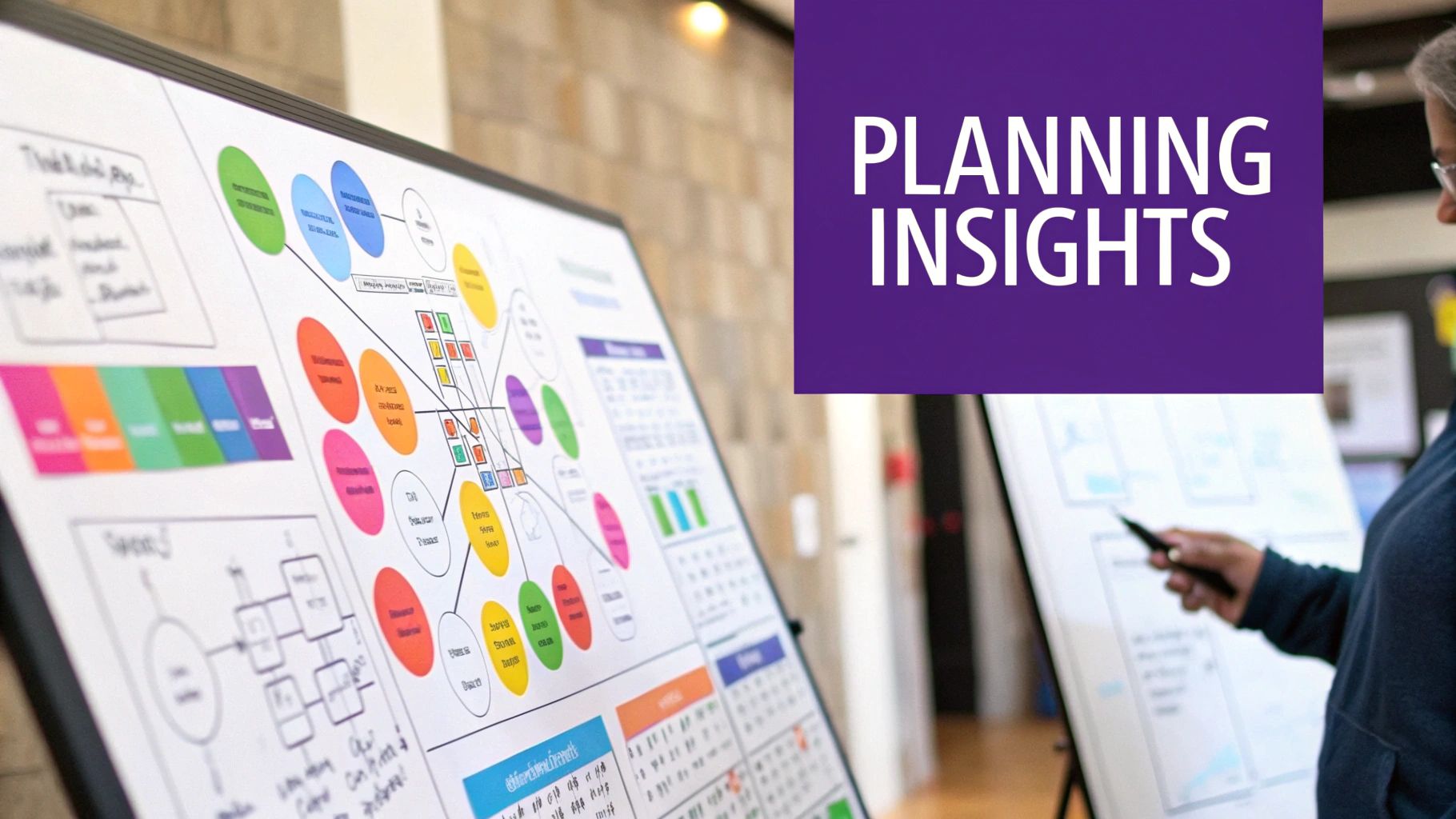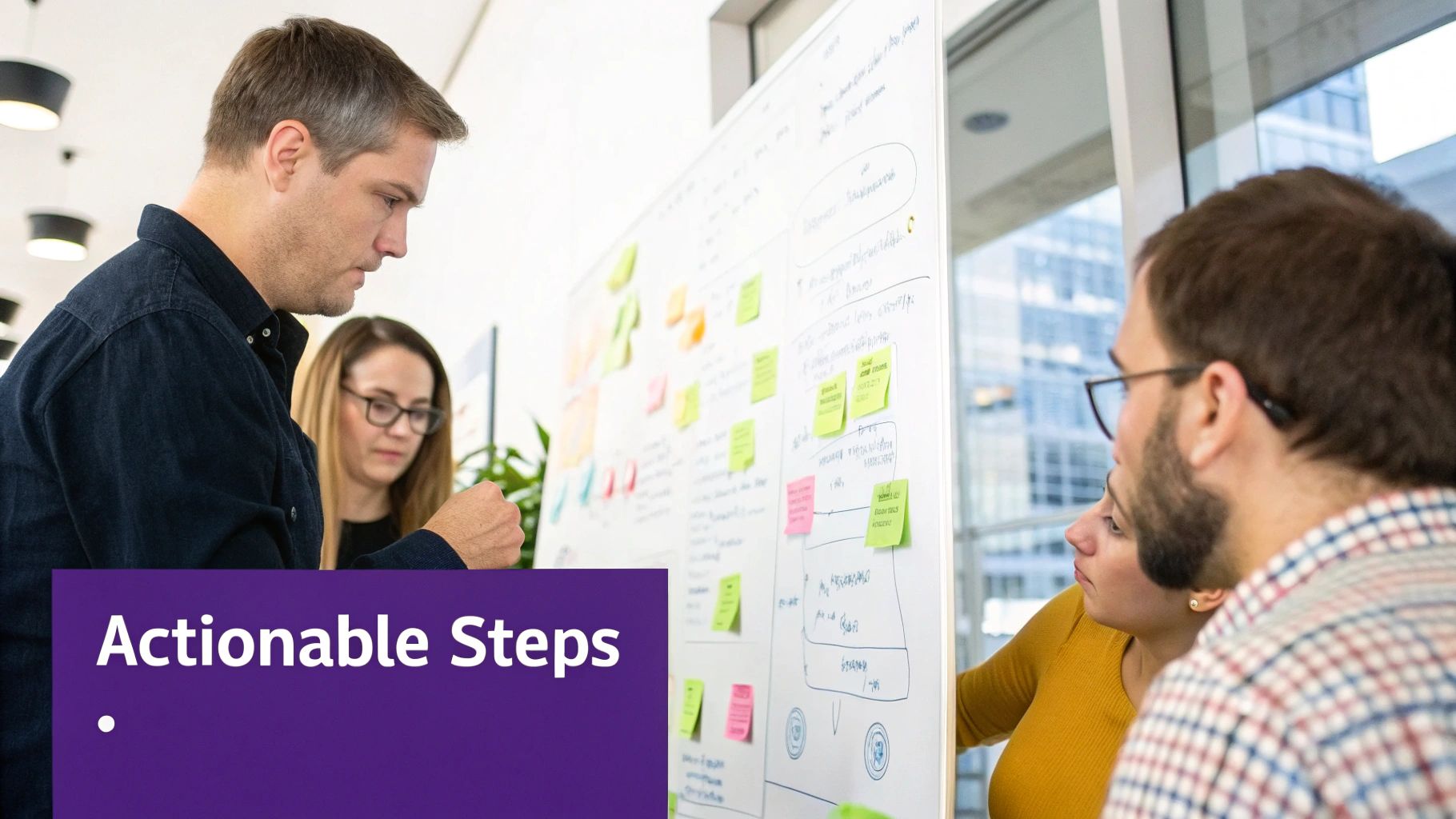Understanding The Power of Retrospective Meetings

Retrospective meetings go beyond simple post-project reviews – they help teams improve continuously. These sessions give teams space to look back at their work and find ways to do better. Many successful teams have moved away from only analyzing projects after they finish, choosing instead to reflect and adjust throughout the process.
Why Retrospectives Matter
Regular retrospective meetings help create a culture where teams learn and grow together. They provide a structured way for teams to talk openly about what's working well and what needs improvement. This open discussion builds stronger teams and increases trust. Teams take control of their own improvement – for instance, they might notice their daily check-ins aren't productive and choose to try a different approach.
Timing and Frequency: Finding the Right Balance
Getting the timing right for retrospectives makes a big difference in how well they work. Different teams need different schedules based on their work style. According to research from EasyRetro, most teams hold retrospectives during regular business hours, with peak times at 10 AM and 2 PM. The key is picking times that work for your team without disrupting their normal workflow.
Structuring for Success
A good retrospective follows these key steps:
- Setting the Stage: Start with a quick activity to help everyone feel comfortable sharing
- Gathering Data: Look at important numbers and feedback from recent work
- Identifying Themes: Find common patterns in the feedback
- Developing Actionable Items: Create clear, specific goals for improvement
- Following Up: Assign tasks and track progress between meetings
Building Psychological Safety
Teams need to feel safe sharing honest feedback during retrospectives. When people know they can speak up without negative consequences, they share more valuable insights. This leads to better solutions and real improvements. Setting clear ground rules and showing respect for all viewpoints helps teams get the most value from their retrospective meetings.
Building Blocks of High-Impact Retrospectives
Team retrospectives are essential for growth and project success. These meetings give teams dedicated time to reflect on their work and identify improvements. However, running an effective retrospective requires careful planning and structure.
The Five Stages of a Successful Retrospective
For best results, retrospectives should follow these key stages:
-
Set the Stage: Create a welcoming environment where team members feel safe sharing openly. Start with a quick icebreaker or mood check-in. The goal is to establish psychological safety.
-
Gather Data: Review information from the past sprint or project period. Look at metrics, completed work, and team experiences. This ensures everyone has the same context for discussion.
-
Generate Insights: Look for patterns and root causes in the data. Group similar feedback to identify key themes. For instance, if multiple people mention communication issues, that highlights an area needing attention.
-
Decide What to Do: Work together to create specific action items based on the insights. Actions should be SMART – Specific, Measurable, Achievable, Relevant, and Time-bound.
-
Close Strong: Review key takeaways, assign owners to action items, and thank participants. This creates accountability and proper closure.
Facilitating Effective Discussions
Facilitators play a key role in guiding productive retrospectives. Here's what they should focus on:
-
Full Participation: Use techniques like round-robin sharing or anonymous input to include quieter team members.
-
Group Management: Keep discussions focused and constructively handle any conflicts or disagreements.
-
Time Control: Follow a clear agenda and keep each stage on schedule to prevent the meeting from running long.
-
Stay Neutral: Guide the process without inserting personal opinions or biases into the discussion.
Tools and Techniques for Retrospectives
The right tools can help retrospectives run smoothly:
-
Brainstorming Tools: Bulby and similar tools help teams generate ideas and participate fully, especially when working remotely.
-
Visual Aids: Whiteboards, sticky notes, and online collaboration tools make information easier to understand and discuss.
-
Templates: Pre-made retrospective templates provide helpful structure, particularly for teams new to the process.
When teams implement these building blocks thoughtfully, retrospectives become powerful opportunities for growth and improvement. Regular, well-run retrospectives lead to stronger teamwork, higher productivity, and better results.
Using Data to Make Better Retrospectives

Good retrospective meetings need more than just team opinions. Using real data helps teams see their performance clearly and spot areas that need work. Instead of relying on gut feelings, teams can make decisions based on solid information.
Mixing Numbers with Team Feedback
The best retrospectives use both hard numbers and team insights. The numbers might show things like bugs fixed, team speed, or completed tasks. Team insights come from surveys, feedback forms, and open discussions during the meeting. Using both types of information gives teams a complete picture of how they're doing.
Simple Ways to Gather Data
Getting useful data doesn't have to be complicated. Teams can use different tools to collect what they need. For example, Bulby helps gather feedback and track important metrics. Project management tools can show how fast work gets done. Even basic spreadsheets work well for tracking key numbers. Having this information ready makes meetings more productive.
Showing Data Clearly in Meetings
How teams present data matters a lot. It should be easy to see and understand, with a clear connection to team goals. Charts and graphs help show patterns over time. Teams should dig into why the numbers look the way they do. For example, if work slowed down, the team needs to understand what caused it. This helps them make better plans.
Making Real Changes Based on Data
Data becomes truly useful when teams act on it. However, many teams find it hard to use data well in their retrospectives. Research shows that even with lots of data available, teams often stick to just sharing opinions. Learn more about the challenges of data integration in retrospective meetings. The key is turning data into specific actions. Teams should decide who will handle each improvement and check progress over time. This helps make sure retrospectives lead to real team growth.
Mastering Common Retrospective Challenges

Running effective retrospective meetings isn't always easy. Even with careful planning, teams often face various challenges. Let's explore some common obstacles and practical solutions to help make your retrospectives more productive.
Handling Dominant Personalities
Some team members naturally tend to speak more than others, which can limit broader participation. When one person dominates discussions, it's harder for quieter voices to be heard. Tools like Bulby can help structure brainstorming sessions more evenly. Simple techniques like taking turns in a round-robin format ensure everyone gets a chance to contribute.
Engaging Disengaged Participants
Getting everyone involved can be tricky when some team members seem checked out or reluctant to speak up. To help quieter participants feel more comfortable sharing, start with fun icebreakers to boost energy levels. Create a welcoming environment by emphasizing that all perspectives matter. Small group discussions can also make it easier for reserved team members to open up.
Facilitating Difficult Conversations
Sometimes retrospectives bring up challenging topics or disagreements between team members. While these moments may feel uncomfortable, they often lead to important improvements. Set clear guidelines for respectful communication upfront. Help the team view conflicts as chances to learn and get better, rather than purely negative experiences.
Maintaining Focus and Productivity
It's easy for discussions to wander off track during retrospectives. Using visual tools like whiteboards helps keep conversations focused and organized. Create a dedicated space to capture action items as they come up. Regularly summarize key points to help the team stay on target. This ensures you make the most of your meeting time and end with clear next steps.
By addressing these common challenges head-on with practical solutions, you can run more effective retrospectives that truly help your team learn and improve. The key is creating an environment where everyone feels comfortable participating and discussions lead to meaningful changes.
Optimizing Remote Retrospective Experiences
Remote team meetings present their own set of hurdles, especially when it comes to retrospectives. To make virtual retrospectives impactful and engaging rather than awkward video calls requires careful planning and the right approach. Teams are finding success by using digital tools and smart facilitation methods to connect meaningfully despite physical distance.
Engaging Remote Participants
Getting and keeping everyone actively involved can be challenging in remote settings. Starting with a quick, fun icebreaker activity helps set an open tone and encourages interaction from the start. Tools like Bulby provide structured exercises and brainstorming formats that help ensure every team member contributes, including those who tend to be quieter in virtual environments.
Facilitating Deep Discussions Across Screens
Having meaningful discussions remotely means working within the constraints of virtual communication. Make sure all participants can access the same digital workspace and use visual tools like shared whiteboards for collaborative work. For example, having the team work together to map out process flows on a digital canvas can surface issues that might not come up in conversation alone. This hands-on approach often leads to better insights than pure discussion.
Using Tech Tools Effectively
The right technology can make remote retrospectives as productive as in-person ones, if not more so. Take advantage of video platforms with breakout rooms for focused small group discussions. Use quick polls to check team sentiment, especially for sensitive topics or getting a pulse on morale. Simple touches like themed virtual backgrounds can add personality and help create an engaging environment.
Structuring Your Remote Retrospective
Good structure is key for an effective remote retrospective. Set and share clear goals before the meeting starts. Use timed segments for each phase – from gathering input to identifying insights to planning actions. Create ground rules for communication that encourage respectful dialogue while keeping focus. With the right structure, you can maintain momentum and avoid common remote meeting pitfalls like technical disruptions or participants getting distracted.
Measuring and Evolving Your Retrospective Practice

Great retrospective meetings don't just happen – they need consistent measurement and refinement. By tracking the right metrics and gathering feedback, teams can make their retrospectives much more effective.
Establishing Meaningful Metrics
Success starts with clear measurements aligned to team goals. For instance, if you want faster project delivery, track metrics like:
- Sprint cycle time
- Tasks completed per sprint
- Team satisfaction scores
- Number of action items generated
Choosing the right metrics helps you understand if your retrospectives are actually improving team performance.
Gathering Actionable Feedback
Numbers tell part of the story, but direct feedback from team members is essential. Create an environment where people feel safe sharing both positive and negative thoughts. Using tools like Bulby helps collect input systematically, even from remote teams. Anonymous feedback options often lead to more honest responses.
Evolving Your Approach Based on Data
Put your metrics and feedback to work by making concrete changes. For example, if action items often go unfinished, try:
- Breaking them into smaller steps
- Assigning clear owners
- Setting specific deadlines
- Following up regularly
If team members feel rushed, adjust the meeting length or format to give everyone enough time to contribute meaningfully.
Continuous Improvement: The Key to Successful Retrospectives
Think of retrospectives as living processes that need regular tune-ups. Some sprints may need deep dives into specific challenges, while others work better with broader process discussions. Review what's working and what isn't after each session. Make adjustments based on the team's needs. Small, steady improvements compound over time to create major positive changes.
Ready to give your team's retrospectives an upgrade? Start a free trial of Bulby today and see how structured, data-driven retrospectives can work for you.

